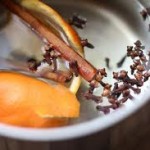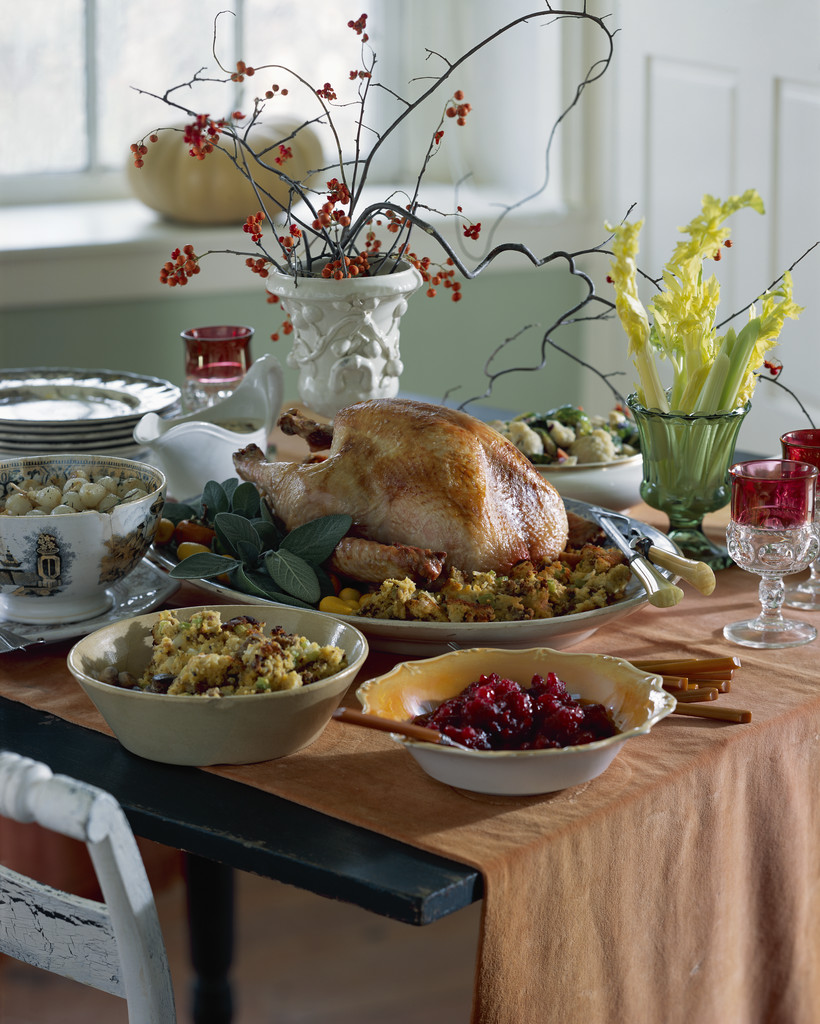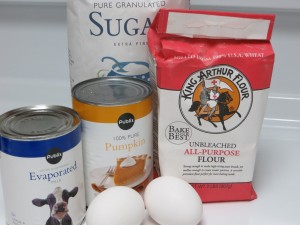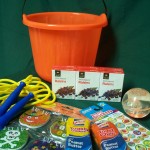by Melanie Taylor | Dec 18, 2013
Normal
0
false
false
false
EN-US
X-NONE
X-NONE
/* Style Definitions */
table.MsoNormalTable
{mso-style-name:”Table Normal”;
mso-tstyle-rowband-size:0;
mso-tstyle-colband-size:0;
mso-style-noshow:yes;
mso-style-priority:99;
mso-style-parent:””;
mso-padding-alt:0in 5.4pt 0in 5.4pt;
mso-para-margin-top:0in;
mso-para-margin-right:0in;
mso-para-margin-bottom:10.0pt;
mso-para-margin-left:0in;
line-height:115%;
mso-pagination:widow-orphan;
font-size:11.0pt;
font-family:”Calibri”,”sans-serif”;
mso-ascii-font-family:Calibri;
mso-ascii-theme-font:minor-latin;
mso-hansi-font-family:Calibri;
mso-hansi-theme-font:minor-latin;}
Normal
0
false
false
false
EN-US
X-NONE
X-NONE
/* Style Definitions */
table.MsoNormalTable
{mso-style-name:”Table Normal”;
mso-tstyle-rowband-size:0;
mso-tstyle-colband-size:0;
mso-style-noshow:yes;
mso-style-priority:99;
mso-style-parent:””;
mso-padding-alt:0in 5.4pt 0in 5.4pt;
mso-para-margin-top:0in;
mso-para-margin-right:0in;
mso-para-margin-bottom:8.0pt;
mso-para-margin-left:0in;
line-height:107%;
mso-pagination:widow-orphan;
font-size:11.0pt;
font-family:”Calibri”,”sans-serif”;
mso-ascii-font-family:Calibri;
mso-ascii-theme-font:minor-latin;
mso-hansi-font-family:Calibri;
mso-hansi-theme-font:minor-latin;}
The holiday season is upon us and that means many of us will be spending more time in the kitchen.

Add that extra-special touch…experiment with a variety of seasonal spices for your holiday meals. And, enjoy the flavors as the aromatic scents fill your home.
If you would like to make an impression with a less-than-ordinary meal, use traditional family dishes as a starting point for your special menu, then add seasonal spices to easy-to-prepare dishes to create a holiday feast that your family and friends will talk about for weeks.
Spices are native to warm, tropical climates and are obtained from roots, flowers, fruits, seeds, or bark. Adding “holiday” spices to your recipes will add just the right amount of Christmas charm along with a rich, warm flavor and aroma that enhances many dishes.
Spices do come with some health benefits, the greatest being that spices serve as flavorful alternatives to salt, fat, and sugar without adding any extra calories to meals. Instead of adding sugar to oatmeal, sweet potatoes, and desserts, try adding spices like cinnamon and allspice. For savory meals, replace salt with spices like black pepper, cumin, and dill seed. Try flavoring foods with spices instead of using breading, gravies, and sauces. Seasoning meats with spices and cooking them on the grill are healthy alternatives to frying and easy, flavorful ways to reduce fat intake. Adopting changes like these can help reduce sodium, fat, and sugar in your diet.
How long will these spices last in your kitchen? Dried spices never actually spoil, but their flavor and aroma fade over time. They should be stored in a cool, dry place in tight containers and away from heat. When cooking, keep the container away from steaming pots to avoid exposure to moisture. Ground spices, such as paprika, cinnamon, and nutmeg, can be kept for 2–3 years. Cinnamon sticks, peppercorns, and any other whole spices can be used for up to 5 years. Always start with small amounts of spices. When adding spices to foods that are served cold, it is important to refrigerate the food for a few hours to ensure that the flavors of the spices are well absorbed.
Now you know using spices is a great way to reduce sodium, sugar, and fat in your diet while adding bold new flavors. It’s a good idea to plan your meals before going to the grocery store so you know which spices you will need. Use the advice above to keep seasonings fresh and flavorful. The examples listed above are just a snapshot of possible uses, so be creative! Follow these tips, and you will spice up your cooking in no time.
Normal
0
false
false
false
EN-US
X-NONE
X-NONE
/* Style Definitions */
table.MsoNormalTable
{mso-style-name:”Table Normal”;
mso-tstyle-rowband-size:0;
mso-tstyle-colband-size:0;
mso-style-noshow:yes;
mso-style-priority:99;
mso-style-parent:””;
mso-padding-alt:0in 5.4pt 0in 5.4pt;
mso-para-margin-top:0in;
mso-para-margin-right:0in;
mso-para-margin-bottom:10.0pt;
mso-para-margin-left:0in;
line-height:115%;
mso-pagination:widow-orphan;
font-size:11.0pt;
font-family:”Calibri”,”sans-serif”;
mso-ascii-font-family:Calibri;
mso-ascii-theme-font:minor-latin;
mso-hansi-font-family:Calibri;
mso-hansi-theme-font:minor-latin;}
Here are few of the traditional holiday spices you may want to try this season:
|
Name
|
Source
|
Flavor
|
Best used
|
Pair with
|
|
Cinnamon
|
Dried bark of the cinnamon tree
|
Pungently sweet
|
Dried sticks or ground powder
|
Breads, cakes, chicken, coffee, cookies, pork, spiced beverages, sweet potatoes, squash, tea, yogurt (often paired with allspice, cloves, and nutmeg)
|
|
Nutmeg
|
Seeds of the nutmeg tree
|
Warm, spicy, sweet
|
Freshly ground
|
Applesauce, baked goods, beverages, cheese dishes, cream dishes, desserts, ground meats, pies, sauces, soups, stews, and many vegetables
|
|
Ginger
|
Roots of the ginger plant
|
Mix of pepper and sweetness
|
Dried powder or freshly grated from root
|
Beets, beverages, breads, cakes, cheese dishes, chutneys, cookies, curries, dipping sauce, dressings, meat, poultry, soups, stews, and yellow vegetables
|
|
Cloves
|
Dried flower buds of the clover tree
|
Sweet or bittersweet
|
Dried and ground
|
Baked goods, beets, chili sauces, cookies, curries, fruit sauces/syrups, gingerbread, squash, and tomato sauces
|
|
Allspice
|
Dried unripe berry of the Pimenta dioica plant (a tropical evergreen tree)
|
Pungent and fragrant (ground allspice releases aromatic notes reminiscent of cinnamon, nutmeg, and cloves)
|
Dried, ground, and fresh leaves
|
Meats, jerk seasoning paste, marinades for chicken and pork, stews, roasts, soups, barbecue and tomato sauces, roasted vegetables, rice, applesauce, fruit compote, oatmeal cookies
|
Normal
0
false
false
false
EN-US
X-NONE
X-NONE
/* Style Definitions */
table.MsoNormalTable
{mso-style-name:”Table Normal”;
mso-tstyle-rowband-size:0;
mso-tstyle-colband-size:0;
mso-style-noshow:yes;
mso-style-priority:99;
mso-style-parent:””;
mso-padding-alt:0in 5.4pt 0in 5.4pt;
mso-para-margin-top:0in;
mso-para-margin-right:0in;
mso-para-margin-bottom:10.0pt;
mso-para-margin-left:0in;
line-height:115%;
mso-pagination:widow-orphan;
font-size:11.0pt;
font-family:”Calibri”,”sans-serif”;
mso-ascii-font-family:Calibri;
mso-ascii-theme-font:minor-latin;
mso-hansi-font-family:Calibri;
mso-hansi-theme-font:minor-latin;}
Be sure to add this spiced tea to your holiday table. Enjoy and Happy Holidays!
Mulled Holiday Tea
Ingredients:
3 quarts simmering water
3 red fruit tea bags
3 regular tea bags
1 orange, cut in quarters and studded with 4 whole cloves
1 lemon, cut in quarters
1/2 cup fresh cranberries
2 cinnamon sticks
Directions:
1. Simmer water in a large pot on the stove.
2. Add all ingredients and turn the heat to low.
3. Heat for a few minutes until the tea is steeped.
4. Remove the tea bags.
5. Serve hot to your guests.
Serves 12. Each 1 cup serving: 2 calories, 0g fat, 0g saturated fat, 0g trans-fat, 0mg cholesterol, 10mg sodium, 0g carbohydrate, 0g fiber, 0g sugars, 0g protein
Source: Shopping for Health: Herbs and Spices, J. Norris, W. Dahl, University of Florida/IFAS Extension.
by Shelley Swenson | Dec 18, 2013

Image by © Royalty-Free/Corbis
The countdown is upon us. The last-minute food preparation is soon to begin. Don’t regret the holidays by overdoing in the food consumption aspect of meals. Avoid having to include a strict eating regimen as a new year’s resolution by making some changes in the way you prepare your food. There are ways to cut back during food preparation to spare calories without changing the taste. Consider these suggestions:
- Turkey: Haven’t bought yours yet? Choose a plain bird over a self-basting bird to lower the sodium content. To ensure a moist bird, leave the skin on while roasting, don’t over-bake the bird, and pour gravy on the meat after carving. This isn’t a calorie savings but we have to concern ourselves with sodium intake every day. Consider the latest recommendation from the 2010 Dietary Guidelines for Americans. It is suggested that we reduce our daily sodium intake to less than 2,300 milligrams (mg) and further reduce intake to 1,500 mg among persons who are 51 and older and those of any age who are African-American or have hypertension, diabetes, or chronic kidney disease. The 1,500 mg recommendation applies to about half of the U.S. population, including children and the majority of adults. (Source: Dietary Guidelines for Americans 2010, USDA, www.dietaryguidelines.gov)
- Gravy: Use a fat-skimmer cup or freeze the juices in a shallow pan so you can remove the fat. You will save around 56 grams of fat per cup!
- Dressing: Use a low-sodium boxed stuffing mix and add sautéed onion, celery, apples, and cooked rice. Add a little more broth and bake. Dressing is my favorite part of the meal so I fill my plate with low-calorie vegetables and fruits before the dressing is passed to me to keep my calories under control.
- Candied yams: Sweeten with apple or orange juice and add ground cinnamon. Realize yams have flavor all by themselves. Wean yourself off the butter and marshmallows and enjoy their wholesome taste.
- Green bean casserole: Green bean casserole is a favorite for many people over the decades. Cook fresh green bean with chunks of potatoes and fat-free half-and-half instead of cream soup. Top with almonds and leave the fried onion rings in the cupboard.
- Mashed potatoes: Use skim milk, garlic powder, and a little Parmesan cheese instead of whole milk and butter. Serve low-calorie margarine instead of butter.
- Pumpkin Dessert: Consider serving the pumpkin custard without a pie shell. Individual baking dishes adorned with a small dollop of whipped cream can save calories without sacrificing the taste of a holiday meal favorite.
Ever wondered about the fat content of different meats and poultry that are traditionally consumed over the holidays? USDA offers this summary:
Normal
0
false
false
false
EN-US
X-NONE
X-NONE
/* Style Definitions */
table.MsoNormalTable
{mso-style-name:”Table Normal”;
mso-tstyle-rowband-size:0;
mso-tstyle-colband-size:0;
mso-style-noshow:yes;
mso-style-priority:99;
mso-style-parent:””;
mso-padding-alt:0in 5.4pt 0in 5.4pt;
mso-para-margin-top:0in;
mso-para-margin-right:0in;
mso-para-margin-bottom:8.0pt;
mso-para-margin-left:0in;
line-height:107%;
mso-pagination:widow-orphan;
font-size:11.0pt;
font-family:”Calibri”,”sans-serif”;
mso-ascii-font-family:Calibri;
mso-ascii-theme-font:minor-latin;
mso-hansi-font-family:Calibri;
mso-hansi-theme-font:minor-latin;}
Fat Facts
For a 3.5 ounce serving Grams of Fat
Roast Beef 15.0
Turkey Wing with Skin 12.3
Dark Turkey Meat with Skin 11.5
Roasted Ham 9.0
Turkey Breast with Skin 7.3
Dark Meat without Skin 7.0
Turkey Breast without Skin 0.7
|
Holiday meals don’t have to pack such a high-calorie punch. Simple makeover tips can lighten a meal and keep the taste good!
by Marjorie Moore | Dec 2, 2013
On November 1-2, 2013, the Northwest District Agriculture and Family and Consumer Sciences (FCS) Agents Program Implementation Teams collaborated to offer classes during the annual Beekeeping Field Day and Tradeshow held in Chipley, FL.

Attendees learn about bee hive maintenance.
This third-annual event was part of the Florida State Beekeepers Association yearly conference and had a total of 196 attendees for the entire three-day event. State Representative Marti Coley and State Senator Greg Evers were keynote speakers at the Bee Conference.
Approximately 163 individuals attended the entire Saturday Beekeeping Field Day and Trade Show, with 114 attending the FCS honey program. Participants rotated among three 35-minute classes – What’s the Buzz about Honey?, Splitting Beehives, and Products of the Hives.
Noted scientist Dr. Jamie Ellis of the University of Florida IFAS Honey Bee Research and Extension Lab presented a class on the state of the beekeeping industry and how Extension works with beekeepers to enhance the success of their honey production and pollination operations.
The FCS Agents presented information on sugar vs. honey, nutrition facts, diabetes and honey, foodborne illnesses, and types of honey. A honey factsheet and recipe cards were developed and distributed. Participants sampled recipes made with honey, including pumpkin bread, honey lemonade, and a honey-glazed snack mix. One batch of the pumpkin bread was made with honey and one batch with sugar to demonstrate the different properties of these two sweeteners.
There was a panel of experts discussing scouting bee hives for insect and disease problems. Also, attendees participated in hands-on hive splitting and hive smoker lighting demonstrations taught by bee inspectors from the Florida Department of Agriculture and Consumer Services.
For more information on honey or beekeeping, please contact your local UF/IFAS Extension Office.
Source: Dr. Marjorie Moore, Family & Consumer Sciences Agent, Bay County, and Matthew Orwat, Horticulture Agent, Washington County.
by Ricki McWilliams | Nov 16, 2013
 The Season of Hallothanksmas is upon us. Yes, I know what you’re thinking: treats, meats, and delicious eats. But let’s shift our way of thinking. What if we turn our focus to family, friends, and making great memories? Here are three things to think about this holiday season:
The Season of Hallothanksmas is upon us. Yes, I know what you’re thinking: treats, meats, and delicious eats. But let’s shift our way of thinking. What if we turn our focus to family, friends, and making great memories? Here are three things to think about this holiday season:
1. Portion control – Have you noticed how portion sizes keep getting bigger with the option to “super-size?” Some portion sizes have increased so much that they now equal the amount recommended for the entire day. With this growth have come increases in waistlines and body weight. Start with figuring out how big your portions really are. Pour/place in a dish the amount you would normally eat then use a measuring cup to find out how much you are actually eating. Take the Portion Distortion Quiz now.
Basic guidelines when measuring portions:
1 cup = baseball
½ cup = light bulb
1 oz or 2 tbsp = golf ball
1 tbsp = silver dollar
3 oz chicken or meat =deck of cards
3 oz fish = checkbook
2. Some easy ways to keep your commitment to healthful eating: Pack your shopping cart with plenty of fresh vegetables like sweet potatoes, winter squash, broccoli, carrots, and green beans. Apples, cranberries, and pears combine easily for a tasty salad, fruit crisp, or topping for the turkey. Reduce fat and calories without sacrificing the taste with these quick substitutions: two egg whites for one egg; low-sodium, fat-free broth in your mashed potatoes; cutting back on added butter or margarine; applesauce for oil, margarine, or butter when baking. Use fat-free yogurt, sour cream, and whipped topping for dips, sauces, and pie toppings. Try sliced almonds in place of fried onion rings for a crunchy topping. Replace regular with reduced-fat or low-fat cheese for salads and casseroles. Substituting ingredients can change the texture of the finished product so be sure to start with small changes.
3. Going to a gathering? With a little preparation, you can still keep off the extra holiday pounds. If you plan on treating yourself later, start your day with a small meal that includes whole grains, fruit, low-fat or fat-free dairy, and protein like eggs, ham, or peanut butter. Don’t starve yourself beforehand. Rather, eat a small, lower-calorie meal or snack so you don’t overdo it at the party. Choose carefully and decide among foods you definitely will eat, those you will sample, and those you will skip. Don’t rush to eat. Socialize and settle into the festivities before you eat. Move your socializing away from the buffet or appetizer trays so you don’t nibble unconsciously.
Sources: www.eatright.org; http://myplate.gov/
by Marjorie Moore | Nov 5, 2013

Store homemade pumpkin pies in the refrigerator.
To refrigerate pumpkin pies or not to refrigerate? That is the question. You have seen pumpkin pies in the bakery section of supermarkets not refrigerated and you wonder if you can do the same at home. Unfortunately, homemade pumpkin pies need special care to prevent foodborne illness. Pumpkin pies are a custard-style pie made by using potentially hazardous foods such as eggs and milk. Food temperature controls are especially important with foods classified as potentially hazardous.
Pumpkin pies also have a high moisture and protein content. They must be kept at a refrigerated temperature of 41° F or cooler. If the pies are left out of the refrigerator for more than 2 hours, bacteria grows more rapidly and can cause a foodborne illness.
When cooking, make sure to test your pies for doneness by inserting a clean knife in the center. The knife should come out clean. Remove the pies from the oven and allow them to cool at room temperature for about 30 minutes. After they have cooled, cover and refrigerate to keep them cold.
So, why are pumpkin pies displayed at room temperature at the supermarket? These pies are formulated with shelf-stable ingredients, such as preservatives, that prevent harmful bacteria from growing. Commercial pies must be properly labeled, “approved by the Food and Drug Administration”. They will carry the letters “RT”, which means they meet the guidelines required for display at room temperature. The label will also give a “sell by” or “use by” date. Even these pies should be refrigerated for storage at home especially after they have been cut.
Additional pie safety tips include making sure you purchase clean, refrigerated and uncracked eggs. Keep hands clean by washing them with warm water and soap before handling ingredients. Also, wash utensils, equipment and work surface area with hot soapy water before and after contact with eggs. Never leave milk or eggs out of the refrigerator for more than two hours.
Enjoy those traditional holiday feasts, but keep them safe!
by Judy Corbus | Oct 25, 2013
Normal
0
false
false
false
EN-US
X-NONE
X-NONE
/* Style Definitions */
table.MsoNormalTable
{mso-style-name:”Table Normal”;
mso-tstyle-rowband-size:0;
mso-tstyle-colband-size:0;
mso-style-noshow:yes;
mso-style-priority:99;
mso-style-parent:””;
mso-padding-alt:0in 5.4pt 0in 5.4pt;
mso-para-margin-top:0in;
mso-para-margin-right:0in;
mso-para-margin-bottom:10.0pt;
mso-para-margin-left:0in;
line-height:115%;
mso-pagination:widow-orphan;
font-size:11.0pt;
font-family:”Calibri”,”sans-serif”;
mso-ascii-font-family:Calibri;
mso-ascii-theme-font:minor-latin;
mso-hansi-font-family:Calibri;
mso-hansi-theme-font:minor-latin;}
Normal
0
false
false
false
EN-US
X-NONE
X-NONE
/* Style Definitions */
table.MsoNormalTable
{mso-style-name:”Table Normal”;
mso-tstyle-rowband-size:0;
mso-tstyle-colband-size:0;
mso-style-noshow:yes;
mso-style-priority:99;
mso-style-parent:””;
mso-padding-alt:0in 5.4pt 0in 5.4pt;
mso-para-margin-top:0in;
mso-para-margin-right:0in;
mso-para-margin-bottom:8.0pt;
mso-para-margin-left:0in;
line-height:107%;
mso-pagination:widow-orphan;
font-size:11.0pt;
font-family:”Calibri”,”sans-serif”;
mso-ascii-font-family:Calibri;
mso-ascii-theme-font:minor-latin;
mso-hansi-font-family:Calibri;
mso-hansi-theme-font:minor-latin;}
Normal
0
false
false
false
EN-US
X-NONE
X-NONE
/* Style Definitions */
table.MsoNormalTable
{mso-style-name:”Table Normal”;
mso-tstyle-rowband-size:0;
mso-tstyle-colband-size:0;
mso-style-noshow:yes;
mso-style-priority:99;
mso-style-parent:””;
mso-padding-alt:0in 5.4pt 0in 5.4pt;
mso-para-margin-top:0in;
mso-para-margin-right:0in;
mso-para-margin-bottom:8.0pt;
mso-para-margin-left:0in;
line-height:107%;
mso-pagination:widow-orphan;
font-size:11.0pt;
font-family:”Calibri”,”sans-serif”;
mso-ascii-font-family:Calibri;
mso-ascii-theme-font:minor-latin;
mso-hansi-font-family:Calibri;
mso-hansi-theme-font:minor-latin;}
Normal
0
false
false
false
EN-US
X-NONE
X-NONE
/* Style Definitions */
table.MsoNormalTable
{mso-style-name:”Table Normal”;
mso-tstyle-rowband-size:0;
mso-tstyle-colband-size:0;
mso-style-noshow:yes;
mso-style-priority:99;
mso-style-parent:””;
mso-padding-alt:0in 5.4pt 0in 5.4pt;
mso-para-margin-top:0in;
mso-para-margin-right:0in;
mso-para-margin-bottom:8.0pt;
mso-para-margin-left:0in;
line-height:107%;
mso-pagination:widow-orphan;
font-size:11.0pt;
font-family:”Calibri”,”sans-serif”;
mso-ascii-font-family:Calibri;
mso-ascii-theme-font:minor-latin;
mso-hansi-font-family:Calibri;
mso-hansi-theme-font:minor-latin;}

Give nutritious, tasty foods and non-food items for Fall treats.
With Halloween and Fall Festivals just around the corner, what goodies are you planning to give out? Try nutritious, tasty foods and non-food options, including items that get children up and moving to use the extra calories they consume. Think outside the box when choosing treats for trick-or-treaters or party-goers. The calories in all those bite-size Halloween treats add up quickly. Four “bite size” chocolate bars contain approximately 320 calories, 25 jelly beans have 140 calories, and 20 pieces of candy corn add up to 100 calories.
There are other treats that are lower in fat and sugar and may provide vitamins, minerals, and fiber. Set a good example by passing out healthy treats like these instead of candy:
- cereal bars
- snack packets of dried fruit, baked pretzels, nut and seeds (e.g. peanuts*, unsalted almonds, sunflower seeds or pumpkin seeds)
- trail mix*
- packages of low-fat crackers with cheese or peanut* butter filling
- animal crackers
- goldfish-type crackers
- graham crackers
- 100-calorie packs of various products
- beef or turkey jerky
- single-serve boxes of ready-to-eat cereal
- mini boxes of raisins and chocolate-covered raisins
- fig cookies
- sugar-free gum or hard candy
- gummy candies made with real juice
- individual juice drinks (100% juice)
- pudding cups
- gelatin cups with fruit
- applesauce cups
- single-serve packets of low-fat microwave popcorn
- sugar-free hot chocolate or apple cider packets
*Be careful of peanut and tree nut allergies.
If you choose candy for treats, look for those that are lower in fat and sugar. Choose bite-size candy bars based on the least amount of fat and calories per serving. In addition, consider healthier dark chocolate versions.
Non-food Treats: Children also will enjoy non-food treats** like those typically given in birthday goodie bags:
- small toys and pocket-sized games
- glow sticks
- costume jewelry (plastic rings, necklaces, and bracelets)
- funny Halloween glasses
- false teeth
- miniature magnifying glasses
- tiny decks of cards
- small stuffed animals
- pencils
- pencil toppers and fancy erasers
- markers
- stickers, including reflective safety stickers
- rub-on or stick-on temporary tattoos
- bookmarks
- crayons
- coloring tablets
- paint brushes
- pages from coloring books
- children’s magazines or comic books
- bottles of bubbles
- coins (pennies, nickels, dimes)
- fake money
- whistles
- toothbrushes
- used books
- coupons from a yogurt store or juice bar
**Some treats fit all ages, but small items should be limited to kids over age three.
Treats to Promote Activity: Encourage kids to be more physically active by giving small, inexpensive toys to get them up and moving.
- a bouncy ball
- a jump rope
- sidewalk chalk for drawing a hopscotch or foursquare game
- a beanbag for hacky sack
- a plastic or foam flier
Inspect all Halloween treats before children eat them. When in doubt, throw it out! Inventory your children’s candy, and don’t let them eat too many treats at once. Let kids choose a few pieces of candy to eat on Halloween night and then eat a few pieces each day after that.
Combine a treat, such as a miniature candy bar, with a healthy snack like an apple. Make sure the child eats the apple first so they are less hungry for the treat. This provides them with the health benefits of the apple while teaching them healthier eating habits.
Most candy has a long shelf-life. Put the “treat stash” out of children’s reach and limit them to eating about two pieces of candy a day. Larger treats, such as chocolate candy bars, can be cut into smaller pieces and frozen. Pull them out weeks or months later for some bite-sized treats.
Kids with diabetes can have a few sweet treats, too. The rule is moderation with foods high in carbohydrate, including sweets and starches. Suggest the child choose a few favorite treats and trade in the rest for money or a present.
Show children how much you care about them. Give them treats that help them choose wisely today and begin a lifetime of healthy habits.
Source: Healthy Halloween Treats, Clemson University Cooperative Extension, http://www.clemson.edu/extension/hgic/food/nutrition/nutrition/life_stages/hgic4112.html.






